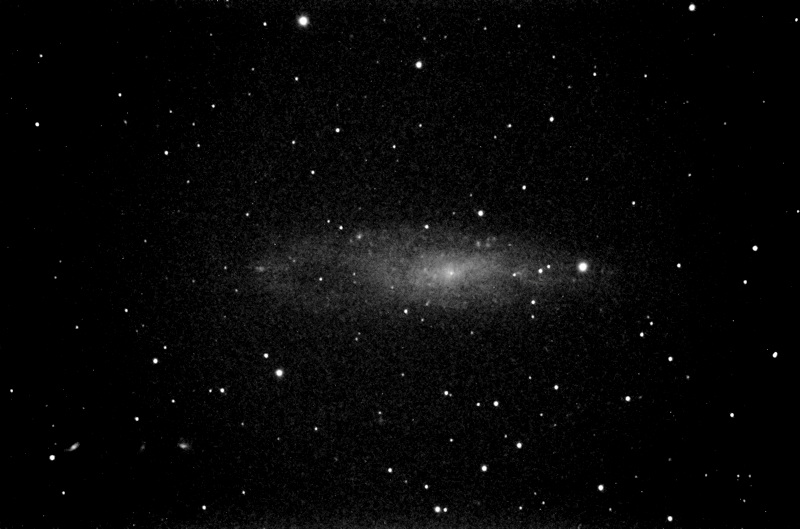
D7000 DSLR Imaging: NGC246, NGC247, Vesta
Posted: 16 October 2012
The observatory was opened Monday, 15 October 2012, at 1813 MST, 82°F. The sky was clear. Viewed Mercury, 77X, low in the west, at 1818 MST. Then Mars, 77X, at 1821 MST; no details visible. Next, I used Observer Pro on the iPhone to identify some possible observing and imaging targets. I selected: NGC147 (galaxy; previously imaged), Caldwell 51 (galaxy), NGC246 (planetary nebula), NGC247 (galaxy), and NGC300 (galaxy).
At 1856 MST, slewed to NGC147 (faint galaxy) in Cassiopeia. It was not yet visible at 77X. At 1900 MST, it became visible; a large but faint galaxy. At 1929 MST, while waiting for the constellation of Cetus to rise higher (with three of the selected DSOs), I observed M33 (Pinwheel Galaxy) at 77X. I switched to a 2" 30mm eyepiece; nice view of M33. Then visited M31 (Great Andromeda Galaxy). A really great view at 67 X in the 2" eyepiece, with lots of structure visible. The companion galaxies M32 and M110 were also nicely viewed. I then used a 5.5mm eyepiece (364X) to study the nucleus of M31.
At 1953 MST, slewed to Caldwell 51 (irregular galaxy) and tried to view it at 77X. Switched to the 2" 30mm eyepiece (67X) and at 2003 MST, it was barely detected using averted vision. The galaxy was large but very faint. At 2006 MST, slewed to NGC246 (planetary nebula), but it was behind a tree limb. At 2018 MST, the nebula was visible, but just barely, at 77X. This planetary nebula was large but very faint.
At 2029 MST, I checked on Comet 168P/Hergenrother, 77X. The comet seemed smaller than it had been on recent nights.
At 2048 MST, slewed to NGC247 (galaxy). At 77X it appeared as a large but faint galaxy. At 2054 MST, viewed NGC300, low in the southeast, 77X. This galaxy was also large but faint. I will image it on a future session.
I started preparing the D7000 DSLR for astrophotography at 2100 MST. Slewed to NGC246 (planetary nebula) at 2108 MST and SYNCed on its position. Mounted the D7000 at prime focus of the 8" LX200-ACF using the Off-Axis Guider and did a focus test image on the star Fomalhaut using the Bahtinov Mask. At 2122 MST, I did two framing test exposures of NGC246 as I looked for a guide star. I located a faint one and took this guided, 5 minute, ISO 6400, slightly cropped image of NGC246:

At 2140 MST, slewed to NGC247 (galaxy) and did a framing test exposure as I had located a faint guide star. I then took this full-frame, guided, 5 minute, ISO 6400, image (desaturated):

I completed DSO imaging at 2150 MST, removed the camera from the telescope, and added the visual back for my upcoming Vesta observation and imaging. At 2210 MST, viewed Jupiter, 77X, low in the east. Three moons were visible. At 2230 MST, viewed M1 (Crab Nebula), 77X, also low in the east.
At 2236 MST, slewed to Vesta's position as indicated by SkySafari Pro on the iPhone. I then began using SkySafari to ID surrounding stars to positively identify Vesta:

At 2300 MST, I had confirmed Vesta. Attached the D7000 DSLR at prime focus + visual back, did a focus test on Aldebaran with the Bahtinov Mask. Slewed back to Vesta and captured Vesta with this 30 second, ISO 1600, image (rotated and cropped to closely match the SkySafari display):

The observatory was closed at 2336 MST, 63°F.
Comments are welcome; use the Comments section below, or you can Email Me. Thanks.
Go to the previous report.
Return to the Cassiopeia Observatory Welcome Page.